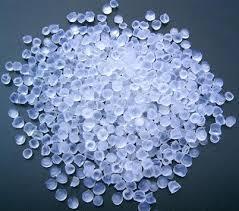
Propylene (also called propene) is in the olefin family of chemicals. It is a byproduct of petroleum refining and a co-product of ethylene production. Propylene is a building-block chemical base for more complex chemicals.
Chemicals created from propylene include, but are not limited to, propylene oxide, acrylonitrile, cumene and acrylic acid, which are used in a variety of products such as films, fibers, containers, packaging, and caps and closures. Learn about more propylene uses and applications.
Uses and Benefits
Propylene is used across various industries such as the petrochemical industry, where it serves as a raw material during production. Many chemicals are produced using propylene. Those chemicals are then used in the manufacture of numerous consumer and industrial products:
- Almost two-thirds of propylene is used to make polypropylene,2 a plastic resin used to make apparel, plastic squeeze bottles, outdoor furniture and many other products.
- Propylene oxide is used to make furniture, automotive parts, boats and recreational vehicles, appliances, solvents and resins.
- Isopropyl alcohol is used to make solvents, cosmetics, household cleaners and pharmaceuticals.
- Plasticizer alcohols are used for surface coatings, adhesives, wire coating and raincoats.
- Acrylic carpet fibers, apparel, auto parts and consumer electronics are made from acrylonitrile. It is also used for wastewater treatment.
- Cumene is a building-block chemical used to produce phenol and acetone. Phenol is used to produce wood adhesives and coatings. Acetone is used to produce medical equipment and baseball helmets.
- Acrylic acid makes surface coatings, adhesives, and superabsorbent polymers, which can absorb significant amounts of water or aqueous fluids. Diapers and sanitary napkins are some of the products that use superabsorbent polymers.
Propylene Grades
There are three main grades of propylene:2
- Refinery-grade propylene is the 50–70 percent pure propylene in propane. Refinery-grade propylene is used in liquefied petroleum gas and as an octane-enhancing component in motor gasoline. It is also used in some chemical syntheses.
- Chemical-grade propylene is used for most chemical derivatives including oxo alcohols.
- Polymer-grade propylene has minimal impurities. Film packaging, carpet fiber and upholstery are some of its end uses. This grade of propylene is also used to make molded plastic parts for appliances and automotive, housewares and medical products.
Safety Information
Potential exposures to propylene may occur around facilities that process or make the chemical. It is less likely that the general public would have direct contact with propylene.
Occupational Propylene Exposure and Safety Precautions
While exposure to moderate amounts of propylene in the air may cause dizziness, drowsiness, and unconsciousness, toxic effects in people from brief, high exposures to propylene have not been reported.
To further protect workers in manufacturing facilities where they may be exposed to chemicals such as propylene, the American Conference of Governmental Industrial Hygienists (ACGIH) set a “threshold limit value.”
A threshold limit value refers to the airborne concentrations of chemical substances and represents conditions under which it is believed that nearly all workers may be repeatedly exposed, day after day, over a working lifetime, without adverse health effects. The threshold limit value of propylene set by ACGIH is 500 parts per million over an 8-hour work shift.
Large amounts of propylene will decrease the available oxygen and can cause asphyxiation. Therefore, oxygen content in facilities where propylene is present should be routinely tested to ensure the oxygen level is above 19.5 percent by volume.
Propylene Skin Exposure
Skin contact with liquified propylene can cause burns, severe injury or frostbite. In occupational settings where propylene is present, workers should have access to, and instructional use of, personal protective equipment to help minimize exposure.
Flammability
Propylene is extremely flammable and easily ignited by heat, sparks or flames. Containers of propylene can rupture if exposed to fire or intense heat for prolonged periods. Fire from propylene may produce irritating and toxic gases. If a tank, rail car or tank truck carrying propylene is involved in a fire, the area should be isolated for one mile in all directions.
Leaks and Spills
Areas that have had a propylene leak or spill should be isolated for at least 330 feet in all directions. Large spills may require downwind evacuation for at least half a mile.
